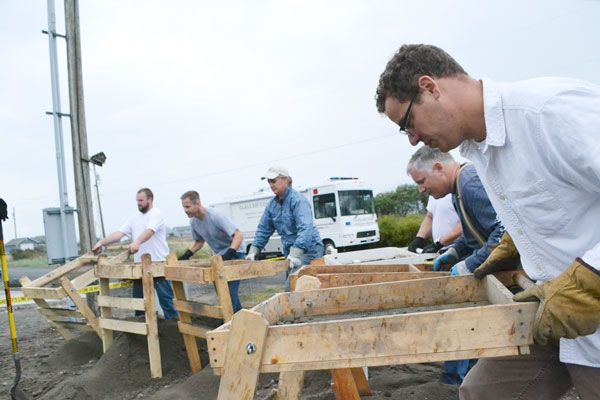A partial skull was found in Diamond Point on Aug. 23.
Experts have determined it to be Native American but no gender or tribe of origin is determined yet.
Homeowner Dave Salmon said excavators installing a septic tank on his property on Beach Drive discovered the skull and contacted Clallam County Sheriff’s Office.
Detective Tom Reyes said he sent a photo of the skull to Kathy Taylor, King County forensic anthropologist, who determined it was non-forensic, meaning not having criminal activity linked to it.
Once the bone was determined non-forensic, the bones were turned over to the Department of Archaeology & Historic Preservation led by state physical anthropologist Guy Tasa.
He said the age of the person hasn’t been determined yet, but he estimates it’s within the last few thousand years.
With a crew from the Department of Archeology and the sheriff’s office, Tasa began sifting sand on Tuesday, Sept. 3, looking for the rest of the remains. They’ll dig to the original landscaping and sort sand, dirt and rocks looking for bones.
As of mid-morning, they found a partial skull, a few long bones and other fragments. Tasa thinks it’s likely they’ll find the rest of the person but he would not release pictures of the bones.
First findings
This is the first bone findings in Diamond Point for the Department of Archaeology, Tasa said.
“Though this is a classic site for prehistoric site,” he said.
Prior to searching for more bones, Tasa contacted the nine area tribes in Clallam County to see if they have any interest in the findings. In his workload, about 80 percent of cases are Native American, he said.
The Jamestown S’Klallam Tribe and the Lower Elwha Tribe contacted him so far.
Two common options with found tribal bones, Tasa said, are to rebury them on site or in a tribal cemetery.
Gideon Cauffman, cultural resources specialist for the Jamestown S’ Klallam Tribe, was on hand to help sift the ground. He said the tribe is interested in the remains because they were found in their territory.
Their preference is to rebury the bones on site and hold a religious ceremony.
Salmon said he’d be amicable to the idea.
Clallam sheriff encourages reporting
Clallam County Sheriff Bill Benedict was on scene Tuesday morning and said it’s important citizens like Salmon notify them.
“We want to inconvenience them as little as possible,” he said. “Our top priority is making sure if it’s forensic or not. The last thing we want is people not reporting it especially if it’s forensic.”
Tasa echoed Benedict’s sentiment on calling in bones. “We encourage it because it makes sure remains get the respect they deserve,” he said. “We work with the cooperation of the landowner and the tribes in a timely manner. It doesn’t always work that way, but generally we don’t have a problem.”
Salmon said he’s not pleased his septic tank project is on hold, but he knows it must be done.
“This wouldn’t be happening at this speed without the help from the Sheriff’s Office,” he said.
In his tenure, Benedict estimates he’s been to about half-a-dozen sites with human bones — forensic and historical — such as in the drained Lake Aldwell last summer. Sometimes bone findings are massive cultural finds such as the Tse-whit-zen in Port Angeles, which the sheriff’s office did not oversee.
“It’s not real common, but it’s important when we do find them,” Benedict said.
The City of Sequim reports no human bones have been called in the past five years.
Benedict said all bones should be reported even if you don’t know if they are human or not by calling 9-1-1.



